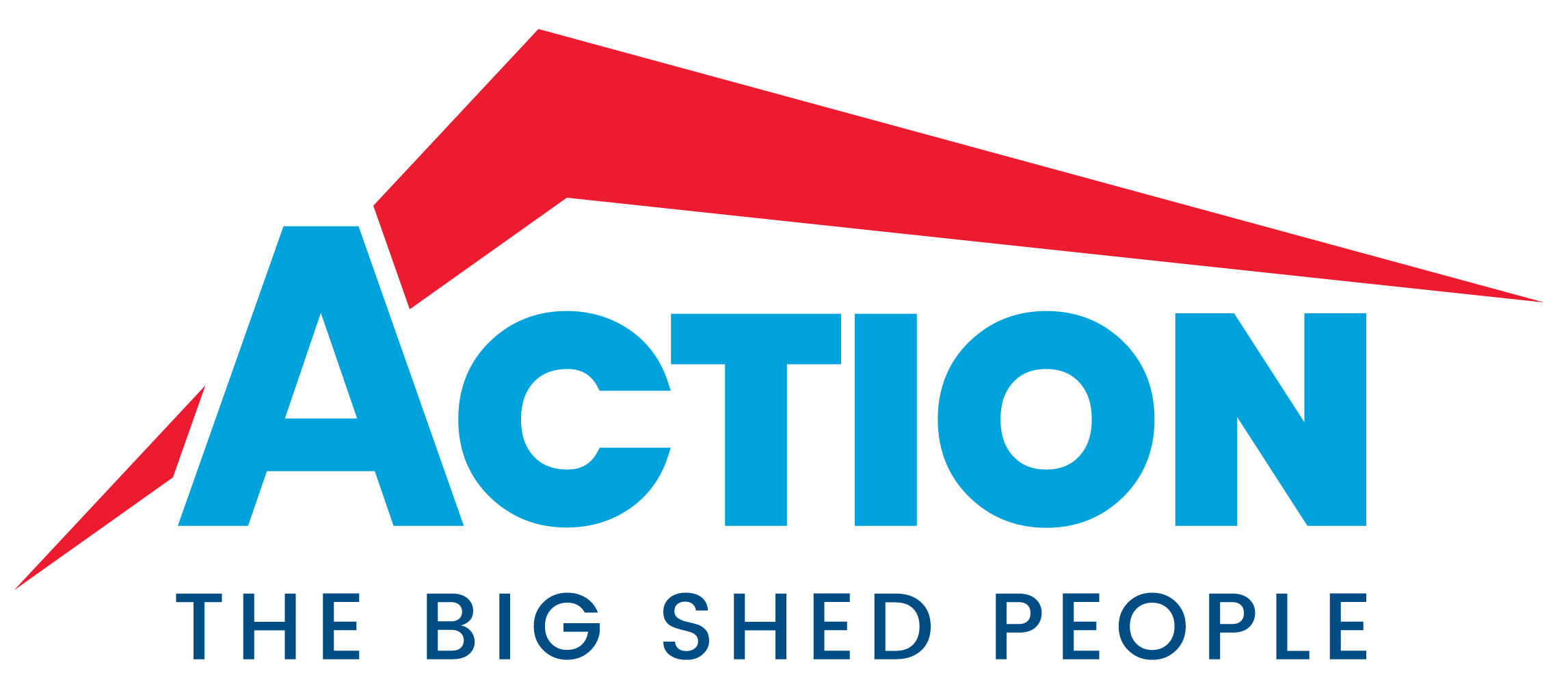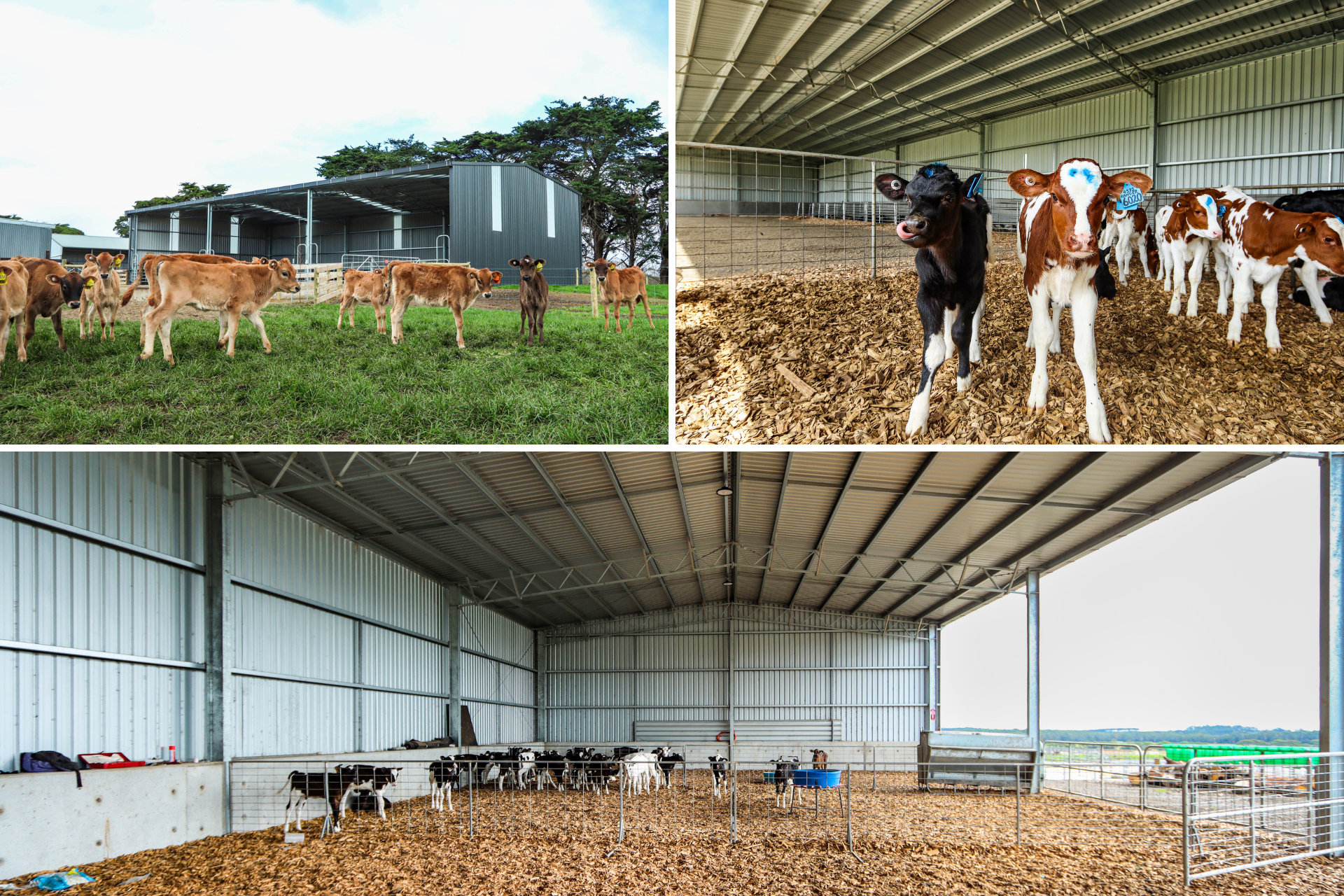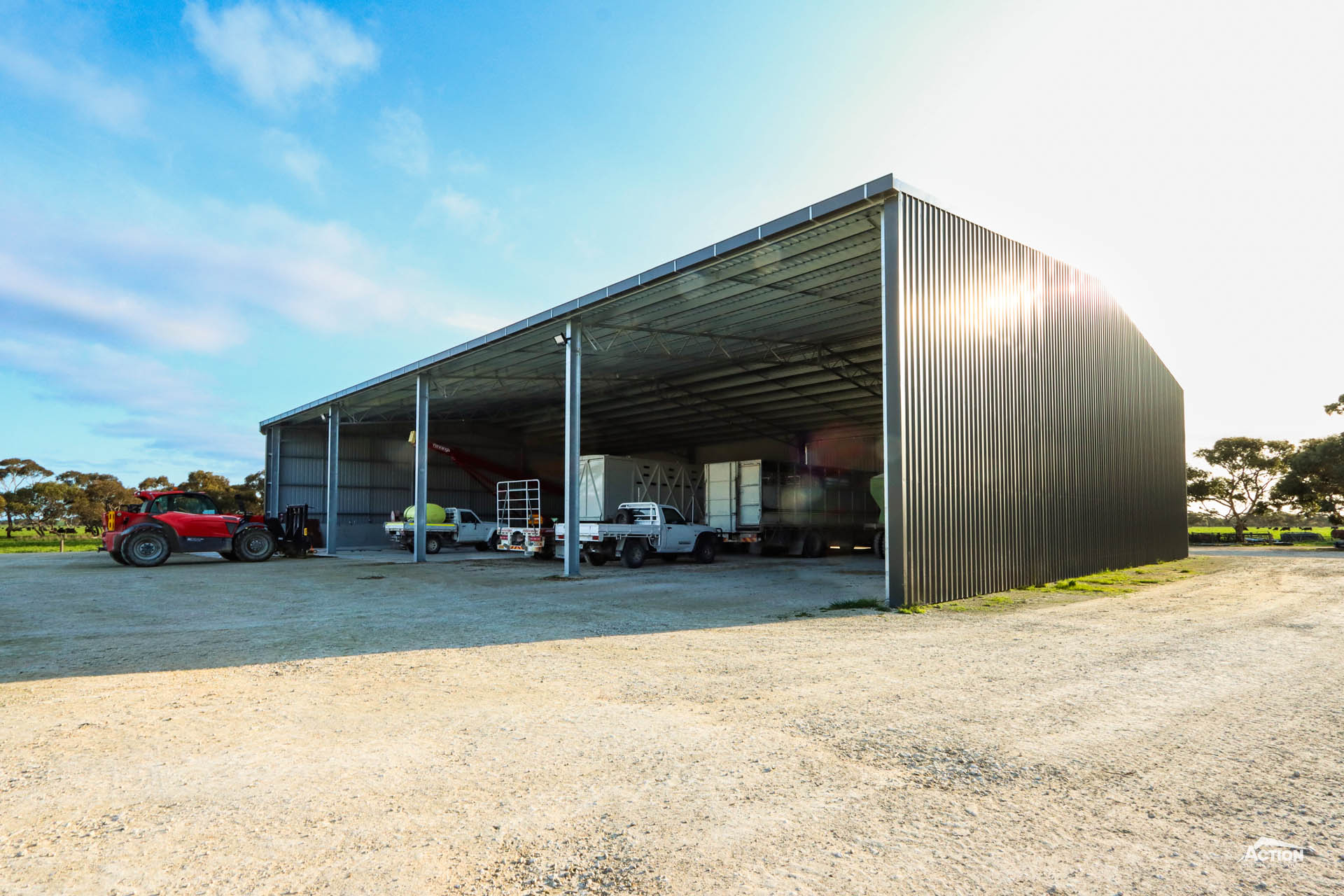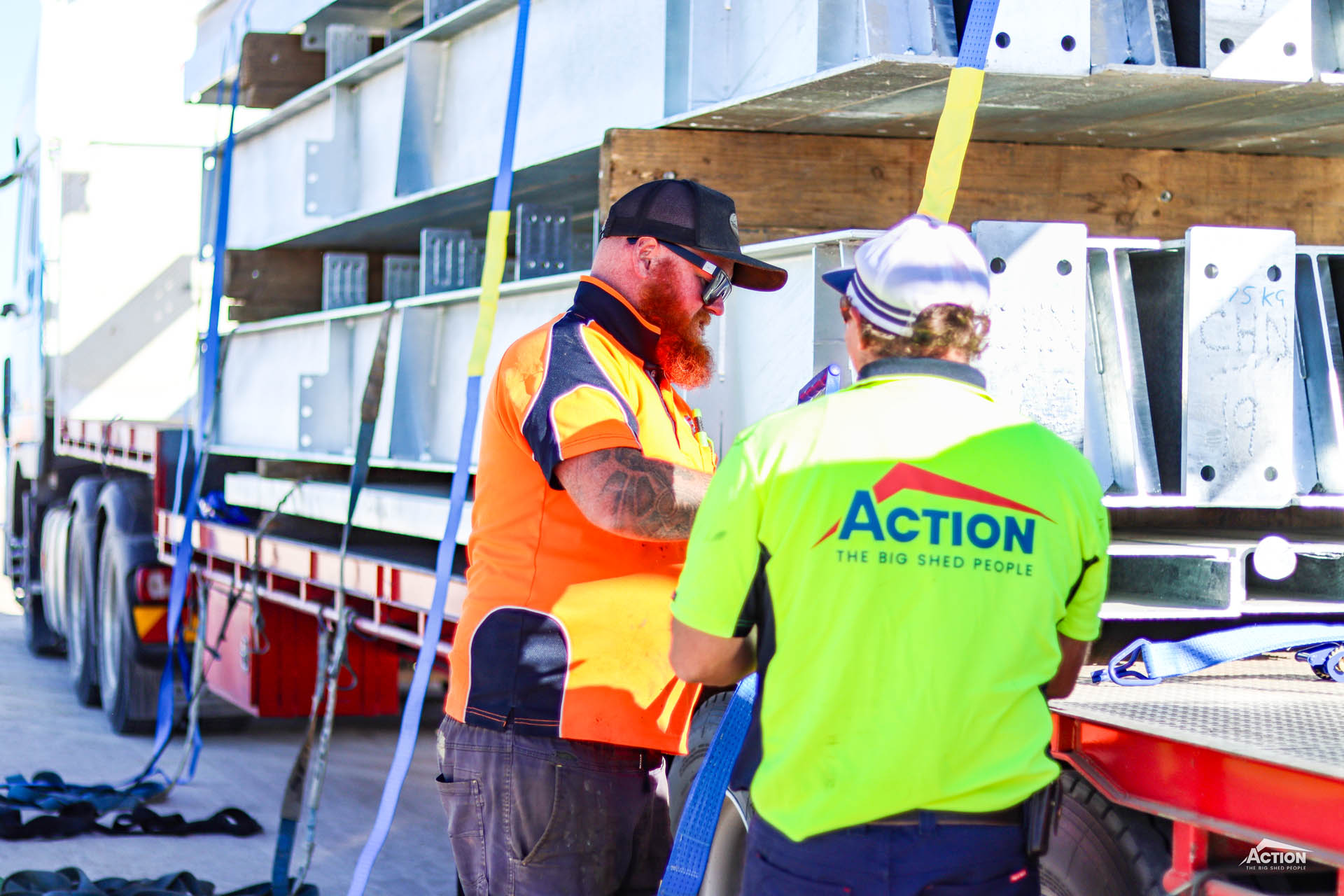Let’s discuss the cost to build a machinery shed!
Storing your farm machinery in a shed makes good economic sense. Good storage helps you get the most out of your machines and helps maintain their resale value.
A farm machinery shed is a practical investment too, helping to keep your machinery safe to operate and helping to minimise frustrating breakdowns and downtime.
So, there are plenty of good reasons to buy a machinery shed!
A new machinery shed can be a significant investment, though. So if you are looking to build a new machinery shed, you might have a few questions about machinery shed prices.
How much does it cost to build a machinery shed?
What are the ways to save money on my machinery shed project?
How much does it cost to add a canopy?
Keep reading to find the answers to these questions. You will also learn about the price of popular machinery shed sizes and the factors that influence the cost to build a machinery shed.
Let’s dive right in!
How Does It Cost To Build A Machinery Shed?
The average cost of new machinery shed in 2025 has been around $130,000 including GST, footing concrete and erection costs.
This average cost does cover quite a wide range of machinery shed projects with varying sizes, configurations and design features.
For a more accurate price guide, let’s look at some of the most popular machinery shed sizes and configurations.
Popular Machinery Shed Sizes & Price List
Here are the price ranges for some of the most popular machinery shed sizes and configurations. The approximate prices include GST, footing concrete and erection.
Please note that these price ranges are approximate and should only be used as a price guide and budgeting tool. For a more accurate price, request an obligation-free quote.
- An open-front 24m x 15m x 5m machinery shed costs approx. $70,000 – $90,000
- A fully enclosed 24m x 15m x 5m machinery shed costs approx. $105,000 – $130,000
- An open-front 32m x 18m x 6m machinery shed costs approx. $95,000 – $120,000
- A drive-through 32m x 18m x 6m machinery shed costs approx. $95,000 – $120,000
- An open-front 40m x 21m x 6m machinery shed costs approx. $135,000 – $165,000
- A drive-through 40m x 21m x 6m machinery shed costs approx. $140,000 – $170,000
- An open-front 48m x 24m x 6m machinery shed costs approx. $175,000 – $210,000
- An open-front 48m x 24m x 6m machinery shed with 6m canopy costs approx. $215,000 – $255,000
Factors That Influence Machinery Shed Prices
To understand machinery shed prices you will need to understand the different factors that influence the cost.
Some of the main factors – which we discuss below -are:
- Shed size
- Shed configuration
- Design features
- Materials

1
Size
The shed size you choose will directly impact the cost of the project.
This is simply because the bigger the shed, the more materials and labour that are required.
The other point to keep in mind when it comes to shed size is that a large machinery workshop can be classified differently to machinery storage shed under the Building Code of Australia.
If this is the case, the workshop shed will need to satisfy further requirements such as fire design and including extra access points and amenities. These will be an additional cost to the project.
The next factor is one of the most important – design.
2
Design
The more involved the shed design, the more expensive the project will be.
Some common design features for machinery sheds include cantilevered canopies, girder trusses, making allowance for a gantry crane, sliding doors, custom gutter systems and a concrete slab. All of these will increase the price of a shed.
However, it is worth noting that including many of these design features on your machinery shed project can help you get the most out of your shed.
So, the benefits may outweigh the cost and, in some cases, could save you money in the future.
For example, installing a custom gutter system can prevent downpipes being damaged by machinery. It will also allow you to capture rainwater run off. You can calculate rainwater harvesting here.
3
Materials
You can’t build a machinery shed without materials! The cost of materials is one of the main contributors to machinery shed prices.
The material costs to keep in mind for your shed project are structural steel, corrosion protection and cladding.
You can learn more about each of these in the articles and videos below:
4
Configuration
The shed configuration also influences the price of a project. How? Here are some of the ways shed configuration affects price.
Generally, a long shed will cost less to build that a wide shed. This is why a drive-through shed can be the most cost-effective way to store long machinery.
A fully enclosed shed is also more expensive than an open-front shed. This is simply because of the extra cladding and sliding doors required.
Finally, not all configurations are a cost-effective option for wide machinery storage. Wide or double-bay openings usually cost more than building a shed with an open gable end.
So, that’s a brief overview of how these factors can influence the cost to build a machinery shed.
Some other factors that will come into play will be:
- Shed location (this will determine delivery costs)
- Shed orientation(some orientations will require heavier engineering, increasing the cost of the shed.)
- Project complexity. For example, if there is limited site access this may increase installation costs.
Next up we discuss some cost-effective design suggestions for machinery sheds. These may help you save money on your project.
Please keep in mind that it is important that your machinery shed design works for you. Don’t sacrifice a good design for the sake of a few dollars!
How Can I Save Money On My Project?
Some of the potential cost-savings on a machinery shed include choosing a standard span and cost-effective configuration.
Keep reading to learn about each one.
1
Choose A Standard Size Span
We recommend that you choose a span from our standard size range. Choosing one of these spans is a cost-saving because it means a new truss jig does not have to be set up specifically for your project.
Our standard spans include a range of practical sizes suited to machinery sheds. These include 18 metres, 24 metres and 27 metres.
You learn about the range here – What Are The Standard Spans For Farm Sheds?
2
Choose A Cost-Effective & Versatile Configuration
As we have already discussed, some configurations are more cost-effective than others.
The most cost-effective configuration is usually a drive-through configuration. This is the least expensive option for wide access and is also the most cost-effective way to store long machinery. So, choosing a drive-through configuration may be a way to reduce project costs without compromising on quality.
It is also a good idea to pay attention to the versatility of a configuration.
For example, you may want to consider combining your machinery storage shed with a workshop shed, rather than building two standalone sheds. One way to do this is to build an open-front machinery storage shed and dedicate one or two lock-up bays for machinery maintenance. Another way is to build a fully enclosed machinery shed with a dedicated workshop area with a concrete slab to one side.
Similarly, if you opt for an open-front machinery shed design, this means that the shed could be used for hay storage in the future.
3
Install A Canopy
Installing a canopy on your machinery shed is a cost-effective way to get more coverage.
For example, it will be more cost-effective to build a 24-metre span shed with a 6-metre canopy (providing 30m shed depth) rather than building a 30-metre span shed. This is often useful to cover longer machinery such as air seeders, augers and b-doubles etc.
4
Consider Your Lighting Options
While skylights may not suit every shed project, installing skylights in your machinery shed could allow you to take advantage of the available natural light and reduce your power bill!
Or if you are building an open-front machinery shed, choose the right orientation so that the shed remains well-lit during the day.
5
Build For The Future
Another way to save money on your machinery shed project is to build for the future.
If you are restricted by cashflow or working to a budget, provision can be made for the shed to be clad later on or for extra bays added in the future.
We hope these five cost-saving suggestions help you with your machinery shed project budget.
Our building consultants are always happy to quote different options to help you find what design will work best for you.
Useful Resources
You may also find these articles and videos helpful for your project budgeting and planning.
We hope this price guide has given you an idea of how much it costs to build a machinery shed!
For more articles like this browse our Learning Hub. This also includes the latest Action Steel videos and brochures.
Or if you have more questions about machinery shed prices and would like an accurate quote, send us a message or give us a call – we’d be happy to help!






